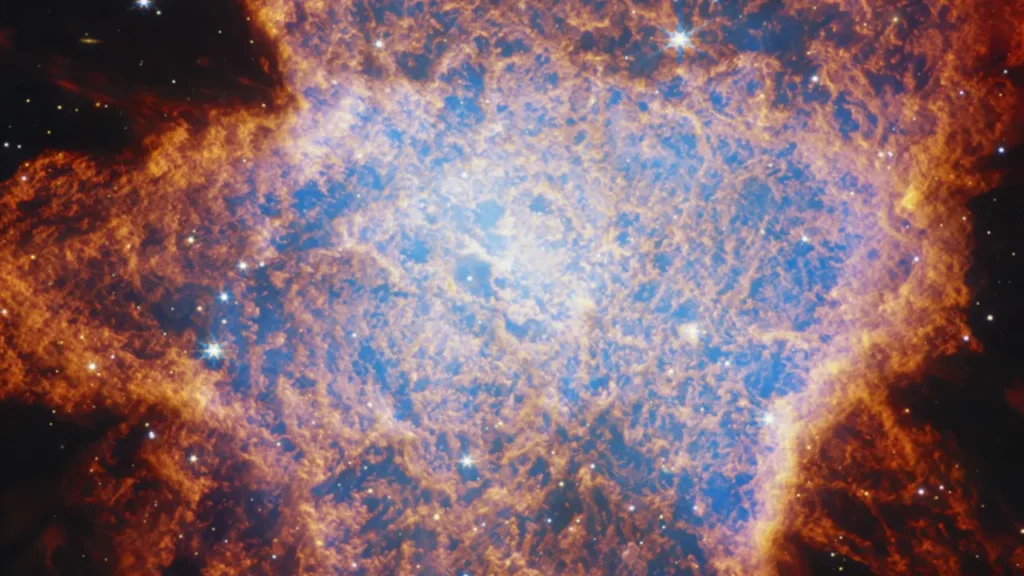
The James Webb Space Telescope has shown a glimpse of a dying star that you have rarely seen before. What you are seeing in this photo is not a colorful painting, but a star taking its last breaths. This cloud-like shape of glowing gas and dust is actually a planetary nebula named NGC 6072, which is about 18,000 light years away from Earth. At first glance, this scene may look a bit scattered and tangled, but this is the reason why it is special.
When stars like our Sun complete their lifespan, they do not explode like a supernova. Instead, they slowly release their outer part into space and leave behind a hot core and a glowing layer of gas. Most planetary nebulae are round or oval, but the shape of NGC 6072 is somewhat different. In this, streams of gas are spreading in different directions, as if waves of fireworks have frozen in space.
Using James Webb’s infrared cameras, NIRCam and MIRI, scientists saw that the nebula is expanding in not one but several directions. Some streams are going from 11 to 5 o’clock, some from 1 to 7 o’clock, and perhaps even one straight up and down. This unusual expansion suggests that something special is happening at the center of the nebula.
Scientists now think that there is not just one but two stars at the center of NGC 6072. One star is in its final stages and has already lost most of its mass. The other star, which is much weaker or hidden, is orbiting the main star, pulling and bending its stream of gas and dust into a complex shape. Webb’s images also show wavy rings around the gas layers, which may have been formed by the companion star’s rotation over thousands of years or by some regular pulsation of the main star.
The blue part at the center of this nebula represents very hot gas, while the red-orange dust surrounding it is cool and slow. A tiny pinkish-white dot seen by the MIRI camera may be the hidden second star shaping this whole structure. Such double star systems help us understand why many nebulae look so strange and irregular.
But it’s not just about color and shape. NGC 6072 shows the moment when a dying star does not completely die out, but instead releases vital elements such as carbon, oxygen and nitrogen into space. These elements are later used to form new stars, planets and perhaps life. That is, the end of a star also becomes the foundation for a new beginning.
This image taken by James Webb is not only beautiful but also extremely informative. It shows us how stars die, how the environment around them changes, and how they shape the future of the universe. This is not just the end of something, but the beginning of a new chapter.



